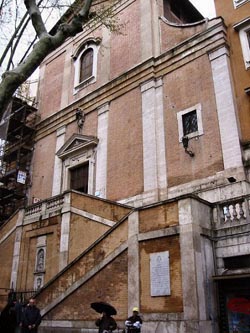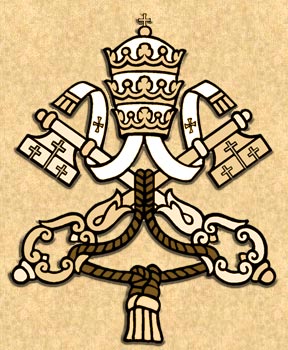It was in a small village at the foot of Mount Appenine named Cantalice, that Saint Felix was born in 1513 of pious but poor parents, whose names were Saint and Sainte. It was not long before the little boy, when he approached the other children, was hailed by them: “Here comes Felix, the Saint!” He showed a predilection for solitary prayer from his earliest youth, and as a little shepherd used to retire to a quiet place to kneel there and meditate on the Passion of Jesus.
When he was a little older, he resolved to take the habit of the Capuchin Friars. The rigor of their rule could not deter him, but his obligations could; he was employed as a laborer. When his life was spared in an accident, during which two runaway bulls and a trailing plow should have killed him, the man for whom he was working saw the hand of God in his preservation and permitted him to leave, to enter religion. He was at that time nearly thirty years old, but the Superiors, observing his fervor, placed no obstacles.
In 1545 he pronounced his vows and was sent to Rome, where for forty years he begged for the community. His characteristic words to his companion were: “Let us go, my Brother, with rosary in hand, our eyes to the ground and our spirit in heaven.” He was of an exquisite politeness, extreme gentleness and great simplicity. The sick persons he visited at night became attached to him, and for his part, he sought them out everywhere in Rome, insofar as obedience permitted.
One day on the street he met two duelists with sword in hand. He begged them to repeat after him, “Deo gratias!” which finally they did, and after taking him as arbiter of their quarrel, they separated as good friends. Saint Felix met Saint Philip Neri in Rome, and they became friends who wished one another all possible torments for the love of Jesus Christ. They sometimes remained together without speaking for considerable periods, seemingly transported with joy.
Saint Felix had a great devotion to the most Blessed Virgin, reciting Her rosary with such tenderness that he could not continue at times. He loved the Holy Name of Jesus, and invited the children he would meet to say it with him. He slept only for about two hours, going afterwards to the church and remaining there in prayer until the office of Prime; then he would serve the first Mass and receive Communion every day.
When he was sick and was given the last Sacraments, he saw the Blessed Virgin and a beautiful troop of Angels coming to fortify him in this last journey. He cried out in joy, and gave up his soul peacefully to his Creator in 1587. He was canonized by Pope Clement XI in 1712. His body is in the Capuchin Church of Rome; a plenary indulgence is granted to those who, fulfilling the ordinary conditions, visit a church of his Order on his feast day.










No comments:
Post a Comment